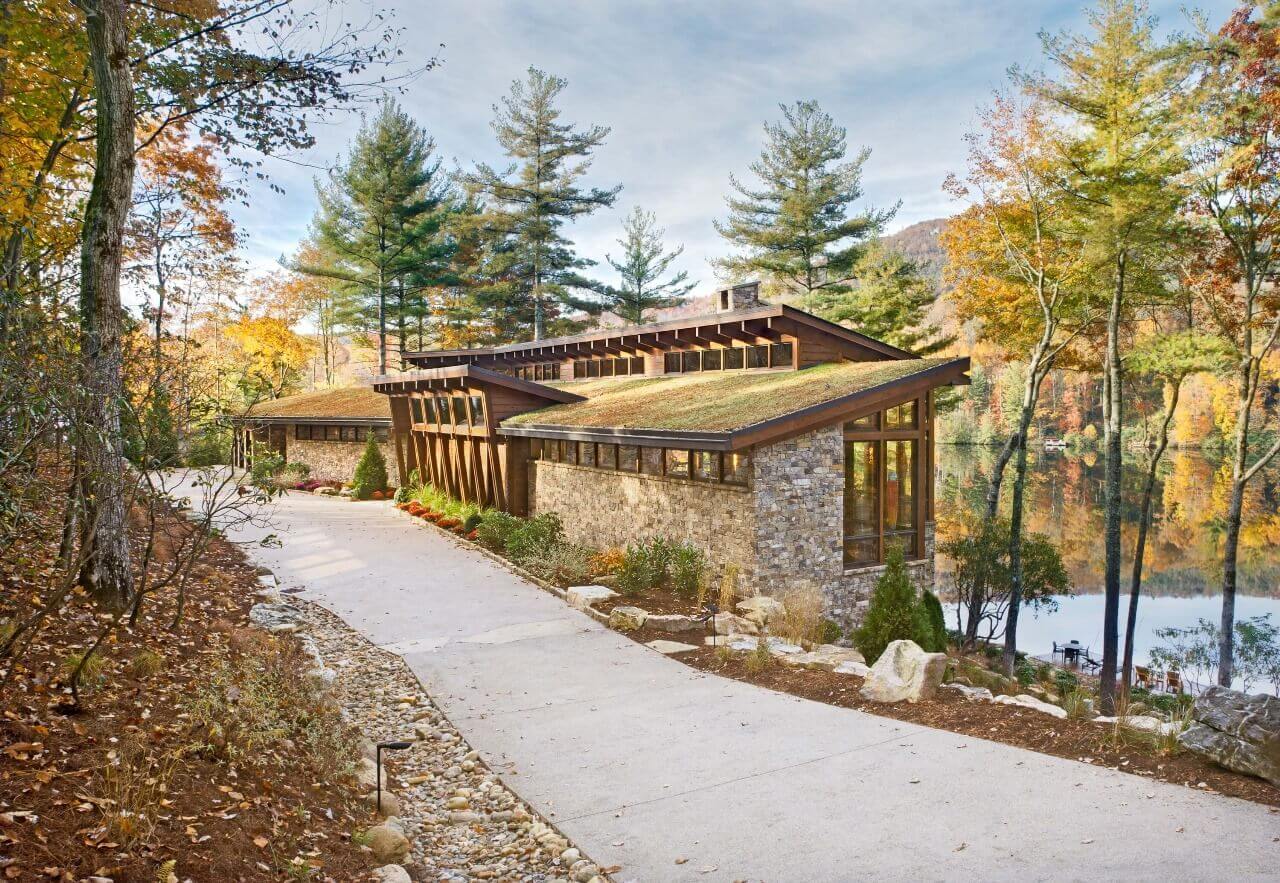Sloped roofing, characterized by its pitched design, is a popular choice among homeowners and builders in Hamilton. This roofing style not only adds an aesthetic appeal to buildings but also offers several functional benefits, especially in regions with diverse weather conditions. In this comprehensive guide, we will explore the advantages of sloped roofing, common materials used, design considerations, and maintenance tips to ensure longevity and performance.
Advantages of Sloped Roofing
1. Effective Water Drainage One of the primary benefits of sloped roofing is its ability to facilitate effective water drainage. The pitched design allows rainwater and snow to slide off easily, preventing water accumulation and reducing the risk of leaks and water damage. This is particularly advantageous in Hamilton, where seasonal rains and snow can be significant.
2. Enhanced Durability Sloped roofs are generally more durable than flat roofs. The angle of the slope helps distribute the weight of rain, snow, and debris more evenly across the roof, reducing stress on the structure. This durability translates to a longer lifespan and lower maintenance costs over time.
3. Improved Energy Efficiency A well-designed sloped roof can contribute to better energy efficiency. The slope allows for better ventilation, which helps regulate indoor temperatures and reduces the need for excessive heating or cooling. Additionally, there is more space for adding insulation, further enhancing energy efficiency and reducing utility bills.
4. Aesthetic Appeal Sloped roofs add a distinctive architectural character to buildings. They come in various styles, including gable, hip, and mansard, allowing homeowners to choose a design that complements their aesthetic preferences and enhances the overall curb appeal of their property.
5. Increased Living Space The pitch of a sloped roof creates additional attic space, which can be converted into living areas, storage, or even functional rooms like offices or playrooms. This added space can increase the overall value and functionality of a home.
Common Materials for Sloped Roofing
Choosing the right material for a sloped roof is crucial for its performance and longevity. Here are some commonly used materials in Hamilton:
1. Asphalt Shingles Asphalt shingles are a popular choice due to their affordability, versatility, and ease of installation.
2. Metal Roofing Metal roofing is known for its durability and longevity. It is resistant to extreme weather conditions, including heavy snow, rain, and high winds. Metal roofs are also energy-efficient, as they reflect solar heat, reducing cooling costs in the summer. They are available in various styles, such as standing seam, corrugated, and metal tiles.
3. Clay and Concrete Tiles Clay and concrete tiles offer excellent durability and a distinctive aesthetic appeal. They are resistant to fire, insects, and rot, making them a reliable choice for long-term performance. These tiles are heavy, so they require a robust roof structure to support their weight.
4. Wood Shingles and Shakes Wood shingles and shakes provide a natural and rustic look to sloped roofs. They are typically made from cedar, redwood, or pine. While wood roofing requires regular maintenance to prevent rot and insect damage, it offers excellent insulation and can last for many years with proper care.
5. Slate Roofing Slate roofing is a premium option known for its exceptional durability and timeless beauty. Slate tiles are natural stone, making them resistant to fire, water, and extreme weather conditions. Although slate roofing can be more expensive and challenging to install, its longevity and aesthetic appeal make it a valuable investment.
Design Considerations for Sloped Roofing
1. Roof Pitch The pitch of a sloped roof significantly impacts its performance and appearance. The pitch is determined by the rise-to-run ratio and affects water drainage, snow shedding, and overall structural stability. Consulting with a roofing professional can help determine the optimal pitch for your specific needs and local climate.
2. Ventilation Proper ventilation is essential for maintaining the health of a sloped roof. Adequate airflow prevents moisture buildup, which can lead to mold, mildew, and structural damage. Ridge vents, soffit vents, and gable vents are commonly used to ensure sufficient ventilation.
3. Insulation Insulation plays a crucial role in enhancing energy efficiency and comfort. Proper insulation helps regulate indoor temperatures, reduces energy consumption, and prevents heat loss during the winter months. Insulating the attic space under a sloped roof can significantly improve overall energy efficiency.
4. Aesthetic Integration Sloped roofing should harmonize with the architectural style of the building. Consider the overall design, color scheme, and material compatibility when selecting roofing materials and styles. This ensures that the roof not only performs well but also enhances the visual appeal of the property.
Maintenance Tips for Sloped Roofing
1. Regular Inspections Conduct regular inspections of your sloped roof to identify any signs of damage, such as loose shingles, cracks, or missing tiles.
2. Clean Gutters and Downspouts Keeping gutters and downspouts clean is essential for maintaining effective water drainage. Remove leaves, debris, and other obstructions to prevent clogging, which can lead to water buildup and damage to the roof.
3. Trim Overhanging Branches Overhanging branches can damage roofing materials and provide a pathway for pests. Trim back any branches that are close to the roof to prevent potential damage and maintain the roof’s integrity.
4. Address Repairs Promptly If you notice any damage or leaks, address repairs promptly to prevent further deterioration.
5. Professional Maintenance Consider hiring a professional roofing contractor for regular maintenance and inspections. Professionals have the expertise to identify potential issues and provide comprehensive maintenance services to extend the lifespan of your sloped roof.
Conclusion
Sloped roofing in Hamilton offers numerous benefits, from effective water drainage and enhanced durability to improved energy efficiency and aesthetic appeal. By selecting the right materials, considering design factors, and maintaining your roof regularly, you can ensure that your sloped roof performs optimally and protects your property for years to come. Investing in a high-quality sloped roof is not only a practical decision but also a way to enhance the overall value and beauty of your home.
